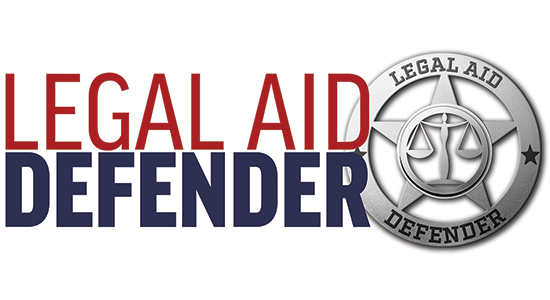Judicial Review of Hearsay Evidence in Unemployment Insurance Decisions

We read with interest retired administrative law judge (ALJ) Charles Schaefer’s article, “Hearsay Problems at Unemployment Insurance Hearings” (Wisconsin Lawyer, April 2017). The Labor and Industry Review Commission (LIRC) and its staff have always had great respect for ALJ Schaefer and his thoughtful decisions throughout his long career. However, we would suggest a correction to his article.
ALJ Schaefer discusses Gehin v. Wisconsin Group Health Insurance Board,1 which holds that uncorroborated hearsay, even if admissible under an exception to the hearsay rule, might not constitute substantial evidence for the purposes of upholding an administrative finding of fact on judicial review.2 ALJ Schaefer suggests at footnote 7 of his article that Gehin does not apply in unemployment insurance (UI) and worker’s compensation cases. He notes that the Gehin court reviewed the agency findings in that case under the substantial evidence standard set out in Wis. Stat. section 227.57(6), while worker’s compensation and UI decisions are reviewed under different statutes, Wis. Stat. sections 102.23 and 108.09(7). ALJ Schaefer asserts that those statutes “provide[] that findings ‘in the absence of fraud’ are conclusive, a much more restrictive standard that precludes any substantial evidence analysis.” ALJ Schaefer concludes footnote 7 by stating that LIRC’s citation to Gehin in unemployment insurance cases “appears to have been an erroneous extension of the Gehin rule.”
ALJ Schaefer’s suggestion that the substantial evidence analysis is precluded or inapplicable on judicial review of LIRC UI and worker’s compensation decisions is incorrect. Both Wis. Stat. sections 102.23(6) and 108.09(7)(f) specifically provide that a court may “set aside the commission’s order or award and remand the case to the commission if the commission’s order or award depends on any material and controverted finding of fact that is not supported by credible and substantial evidence.” Thus, courts generally hold that LIRC’s factual findings are binding “[i]n the absence of fraud … or lack of support by substantial and credible evidence….”3 Indeed, after the Gehin decision was issued, the legislature amended both the worker’s compensation and the unemployment insurance statutes to ensure that certain reports and records, if admitted into evidence, “constitute substantial evidence” for purposes of judicial review under Wis. Stat. sections 102.23(6) and 108.09(7)(f),4 underscoring a legislative concern about the effect of the Gehin rule in worker’s compensation and UI cases.
No published appellate decision specifically addresses the applicability of Gehin on judicial review under Wis. Stat. sections 102.23 and 108.09(7). However, in an unpublished per curiam decision affirming a LIRC worker’s compensation decision, the court of appeals cited Gehin as reaffirming the principle that “uncorroborated hearsay alone does not constitute substantial evidence in administrative hearings.”5 Moreover, the Gehin decision itself cites a number of UI decisions issued in other jurisdictions, as well as a leading worker’s compensation treatise, in support of its reasoning.6 While the department’s rules governing procedures at UI hearings indicate that an ALJ may make a fact finding based solely on admissible hearsay,7 it is by no means clear that reviewing courts will accept the argument that statutory and case law standards of judicial review may be changed by administrative rule.8 Given the statutory language and the existing court decisions, it would be inadvisable for attorneys to assume that reviewing courts will overlook the Gehin decision on review of LIRC decisions in UI and worker’s compensation cases.
ALJ Schaefer also notes that because hearsay evidence is admissible in UI hearings, attorneys may choose not to object to it, and the ALJs may not have the benefit of arguments about admissibility from the parties made at the time of the hearing. He asserts that the use of the hearsay evidence “becomes subject to the vagaries of the judge’s notions on the hearsay rule that counsel cannot discern and has no opportunity to try to correct.” However, these are the types of arguments that parties make to LIRC when they appeal the ALJ decisions and that LIRC addresses and corrects as part of its case review.
1 2005 WI 16, 278 Wis. 2d 111, 692 N.W.2d 865.
2 Id. ¶¶ 89-91.
3 Wisconsin Dep’t of Indus., Labor & Human Relations v. LIRC, 155 Wis. 2d 256, 262, 456 N.W.2d 162 (Ct. App. 1990) (emphasis added; citations omitted); see also General Cas. Co. of Wis. v. LIRC, 165 Wis. 2d 174, 178, 477 N.W.2d 322 (Ct. App. 1991) (LIRC’s findings of fact are conclusive upon review if they are supported by credible and substantial evidence); Xcel Energy Servs. Inc. v. LIRC, 2013 WI 64, ¶ 25, 349 Wis. 2d 234, 833 N.W.2d 665 (court will uphold LIRC’s findings of fact if there is “credible and substantial evidence in the record on which reasonable persons could rely”); Zschock v. Industrial Comm’n, 11 Wis. 2d 231, 235, 105 N.W.2d 374 (1960) (while the findings of fact made by the commission acting within its powers are conclusive absent fraud, the commission acts in excess of its powers if it makes a finding of fact not supported by the evidence).
4 See Wis. Stat. §§ 102.17(1)(d)4., (1)(h), as affected by 2005 Wis. Act 172, §§ 13, 14; Wis. Stat. § 108.09(4o), as affected by 2007 Wis. Act. 59, § 36.
5 Barryv. LIRC, No. 2015AP1853, ¶ 10 (Wis. Ct. App. Feb. 14, 2017). See also Wicke v. LIRC, No. 2004AP2914, ¶ 3 (Wis. Ct. App. May 17, 2005) (citing Gehin for proposition that LIRC may not rely entirely on uncorroborated hearsay).
6 Gehinv. Wisconsin Grp. Ins. Bd., 2005 WI 16, ¶¶ 60-62,
nn. 73-76, 278 Wis. 2d 111, 692 N.W.2d 572.
7 Wis. Admin. Code § DWD 80.16(1).
8 The Gehin court stated: “The dilemma, however, is that if hearsay is admissible in court as an exception to the hearsay rule and a fact-finder in a judicial proceeding may base its decision on admissible hearsay, why then apply what appears to be a more restrictive rule barring an administrative agency from basing its decision on uncorroborated hearsay that falls within a hearsay exception? The primary reason is that in administrative hearings the claimants are often not represented by counsel and decision-makers are often not attorneys. Requiring decision-makers to determine whether hearsay evidence falls within a hearsay exception defeats the reasons for relaxed standards for the admissibility of evidence in administrative agencies. The protection for the parties lies in the requirement that hearsay evidence must be corroborated if an agency is to rely on it as the sole evidence.”
Maria Gonzalez Knavel, LIRC General Counsel
Jeff Shampo, LIRC Staff Attorney
http://lirc.wisconsin.gov
Author Response: I am embarrassed. Ms. Gonzalez Knavel and Mr. Shampo are correct that Wis. Stat. sections 102.23(6) and 108.09(7)(f) do indeed provide for a “substantial evidence” standard of judicial review for findings of fact in worker’s compensation and unemployment insurance (UI) cases. I do not retract my contention, however, that at least in the UI context, the administrative rule, Wis. Admin. Code § DWD 140.16(1), specifically permitting findings of fact based on hearsay exceptions, distinguishes UI hearings from Wis. Stat. chapter 227 hearings considered by the Gehin court since Wis. Stat. chapter 227 is silent on the treatment of hearsay exceptions.
It is certainly true that under current law, initial review of ALJ decisions is performed by LIRC. The problem remains, however, that the ALJ will generally make his or her decision on the sufficiency of evidence unassisted by argument at the hearing. Review by an appellate body is a belated occasion for a fully informed treatment of an evidence issue.
Charles Schaefer
We Want to Hear from You! Submit a Letter to the Editor
Wisconsin Lawyer provides a forum for members to express ideas, concerns, and opinions on law-related subjects. Send comments to wislawyer@wisbar.org (include “Letters” in the subject line), or mail to Wisconsin Lawyer “Letters,” P.O. Box 7158, Madison, WI 53707-7158. Limit to 500 words. Writing guidelines available.
Connect With Us Online. Post comments to articles
online, and find us on Facebook, Twitter, and LinkedIn.
Tackling the Issue of Governmental Immunity
Once again the important issue of governmental immunity has come up recently, in Melchert v. Pro Electric Contractors (2017 WI 30). [Editor’s note: The decision held a private contractor was entitled to governmental immunity for damage done while carrying out the government’s specifications.]
I submit that the most important thing about this case is not discussed in the decision – as it is not considered in any immunity case I have seen in the last 20-plus years. It is about a principle that seems to have just crept into Wisconsin decisions through the evolution of our case law, such as the way the basic principles of the landmark case of Holytz v. City of Milwaukee (1962) have been distorted over the last 50-plus years to the point where immunity is now almost the rule rather than the exception, opposite to the ruling in Holytz.
Somehow, over these years, professional malpractice has also become a “quasi-legislative” activity so that it can be cloaked and forgiven under cover of immunity. When professional malpractice is immunized, highly technical work such as the detailed design of a civil engineering project, including the sizing of pipes and bolts, becomes “legislative” work just because a city or agency ordered the work to be done. This is a guise to protect the government and violates one of the most basic tenets of tort law: that everyone is responsible for the injuries that he or she causes.
As a former structural engineer, I am not trying to be hard on engineers, but it is usually a requirement that engineers who sign off on designs be registered. In most cases, those who sign drawings are putting their reputations and finances on the line and have malpractice insurance in case they do err, just as lawyers do. The purpose of immunity is primarily to shield discretionary decisions – the sizing of bolt and thickness of a pipe are not discretionary, although there may be some latitude.
This is not legislative or quasi-legislative work and should not be immunized. The basic solution, proposed in Bostco v. Milwaukee Metropolitan Sewerage District (2013), is to immunize only decisions that are truly discretionary, such as deciding whether to create a sewer system and not to immunize the professional, detailed work of creating or repairing the system.
Melchert is an example of how present law fails to hold the people at the Wisconsin Department of Transportation (DOT) who created this faulty design through their design choices, as stated in the decision, responsible for it. It should be the law that, in the case at hand, whoever signed the final design at the DOT, along with the DOT itself, should be held responsible for the flooding damage inflicted on these plaintiffs. This principle goes beyond just engineers and engineering work and also applies to any type of professional malpractice, including medical and other professional work (see, e.g.,Scarpaci v. Milwaukee County, 1980).
It has been almost five years since the Bostco recommendation on immunity, which is used by many states. This issue is more than ripe, and I hope that these plaintiffs consider a petition to the supreme court based on this proposed change in the law.
Mr. Owen S. Durigan
Brookfield
Helping Our Low-income Neighbors

In “Take Action: Crisis Looms for State’s Low-income Citizens and Their Lawyers” (InsideTrack, April 5, 2017), Joe Forward explained that a federal budget proposal to defund the Legal Services Corporation (LSC), a major funding source for two longstanding legal aid organizations in Wisconsin, would hurt low-income veterans, domestic abuse victims, and other Wisconsin residents. A reader posted a comment.
Reader: When I started my office in Sheboygan I decided to work with clients on a sliding-fee scale (with an increasing emphasis on the sliding part). Although I have some clients who often struggle to be able to pay the highly discounted fees or retainers I do charge, I have never turned a client away for their inability to pay me. Thus, I have been forced to do more pro bono cases than I care to admit. I am able to do this because of my age and limited lifestyle, my extremely low overhead, and my firm belief that legal help ought to be available to those in our country who cannot otherwise afford it.
I realize that many of my colleagues carry very high overhead in their organizations and practices, including providing employment and the attendant pay and benefits for support staff. I do not deride high-income attorneys at all for what they bring in – I am very glad that many, if not most, can make a great living at our profession. That said, however, I do question those of us who do not give of their time and talent to those of our neighbors who can least afford the valuable services those attorneys provide. In fact, I bristle when I hear that someone is forced to walk away from a lawyer or firm because they cannot afford the exorbitant fees or retainers that were quoted. Or are required to sell their autos or trucks to come up with the money to pay those retainers and fees. That breaks my heart.
Tim Gifford
Gifford Law Office, Sheboygan
Considering President Trump’s Proposed Tax Plan

In “Tax Reform in the Works: The Details for Individuals and Business” (InsideTrack, May 3, 2017), Robert Teuber, a Milwaukee tax lawyer, provided a general overview of what reform might look like for individual and business taxpayers. In announcing his tax plan, President Trump stated its goal is to simplify and make the tax code more competitive, promote job and economic growth, and help low- and middle-income taxpayers. A reader responded.
Reader: I appreciate the effort to quickly describe the two-page Trump tax plan without any details being available. I take issue with the characterization that it is “necessary” to bring the rates on taxpayers owning pass-through entities into “parity,” when the major effect will be to dramatically reduce income taxes for owners of pass-through entities, but at their own, respective income tax rates, as opposed to potentially having the income taxed at whatever the effective corporate rate would be, and then to the individual at the dividend rate.
Pass-throughs were developed precisely for that income tax tradeoff. If the new tax code makes an incentive to move to a different structure, owners of pass-throughs can make that choice. What the proposal seems intended to do, though, is make a massive income tax reduction for the wealthy owners of pass-throughs, by reducing rates to what will likely be lower income tax rates than those of lower-middle-income taxpayers. And, since it seems apparent that the “investment” income from the pass-through may not be characterized as wages, it might not be subject to Social Security or Medicare taxes, which are the burden of every employee, regardless of how small their income.
I would expect the outcome of this proposal to be that lower- and middle-income taxpayers who are employees, like support staff of professional services businesses, will have higher effective tax rates, when you include Social Security and Medicare and income taxes, than the professional owners of their businesses. That makes no sense for tax policy or tax equity, or preservation of the federal tax base. It is not logically necessary.
Thomas Zaremba
Wheeler, Van Sickle & Anderson SC, Madison
